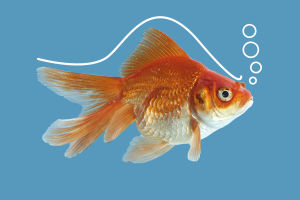The mobula, also known as the devil fish, is named after their swimming posture, which is somewhat similar to that of a bat flying at night and is a collective name for several species of marine fish in the Chondrichthyes, Manta family.
Mobula's body shape is an irregular oval, the body plate is generally 50 to 100 cm, and the maximum can reach 8 meters or more, weighing up to 3 tons.
The body is flattened, wider than long, with a broad flattened end, a wide and flattened muzzle, and pectoral fins as fat as wings.
The two prominent cephalic fins in front of the head with pectoral fins are differentiated, located on both sides of the head, and a long slender tail like a whip with a small dorsal fin.
Some species have one or more venomous spines on the tail.
The mouth is wide, with thin and many teeth, arranged like paving stones, and the upper and lower jaws have tooth bands.
But their upper jaw may not have teeth, the nostrils are located on both sides of the front of the mouth, and the water outlet opens at the corner of the mouth.
Mobula is mostly black or gray-blue on the back, gray and white on the ventral side with scattered dark spots, the body shape is like a huge blanket, plus the rear of its body has a round and thin tail, like a "sea kite".
Mobula is a cartilaginous fish that lives in the bottom of warm temperate and tropical coastal continental and island seas and can weigh up to 3 tons and reach 8 meters in length.
How mobula eat?
The mobula often swims around coral reefs to feed. It swims slowly, flapping its "wings", and uses its front fins and cartilaginous horns to flick plankton and other tiny creatures into its wide mouth, leaving them behind and filtering the water out through a filter system similar to the gills of a bighead carp.
It has a very special appearance, as a fish but has bat-like wings, this incongruous match, so it looks very ugly, people send it the nickname "devil fish" but despite the ugly appearance but has a very gentle heart.
As a marine fish species, it has many natural enemies, but in fact, it is still a very docile animal, it does not like to have conflicts with other fish.
When frightened or attacked by other fish, they will make a frog-like jump to escape. It usually likes to hide under the sand, and its main food is the plankton floating in the sea.
Although mobula looks exceptionally scary, it is often bullied among fish. Its flat body is perfect for hiding in the mud and sand of the seabed.
Mobula not only swim, but they could also "fly".
Similar to whales and dolphins, they have the habit of leaping out of the water, which is why they are also called flying manta rays. Their leaps out of the water are magnificent, reaching heights of up to two meters, often in groups, as if they were synchronized swimming.
Although there are many species of mantas, they all share this habit. Scientists have also found that, especially in the waters off Mexico, manta rays can even have hour-long "flying displays".
Scientists have not yet reached a clear conclusion as to why they fly out of the water. Some believe that this is a behavior to avoid predators; some believe that this is their social ritual, especially in the courtship, which seems to be very romantic.


